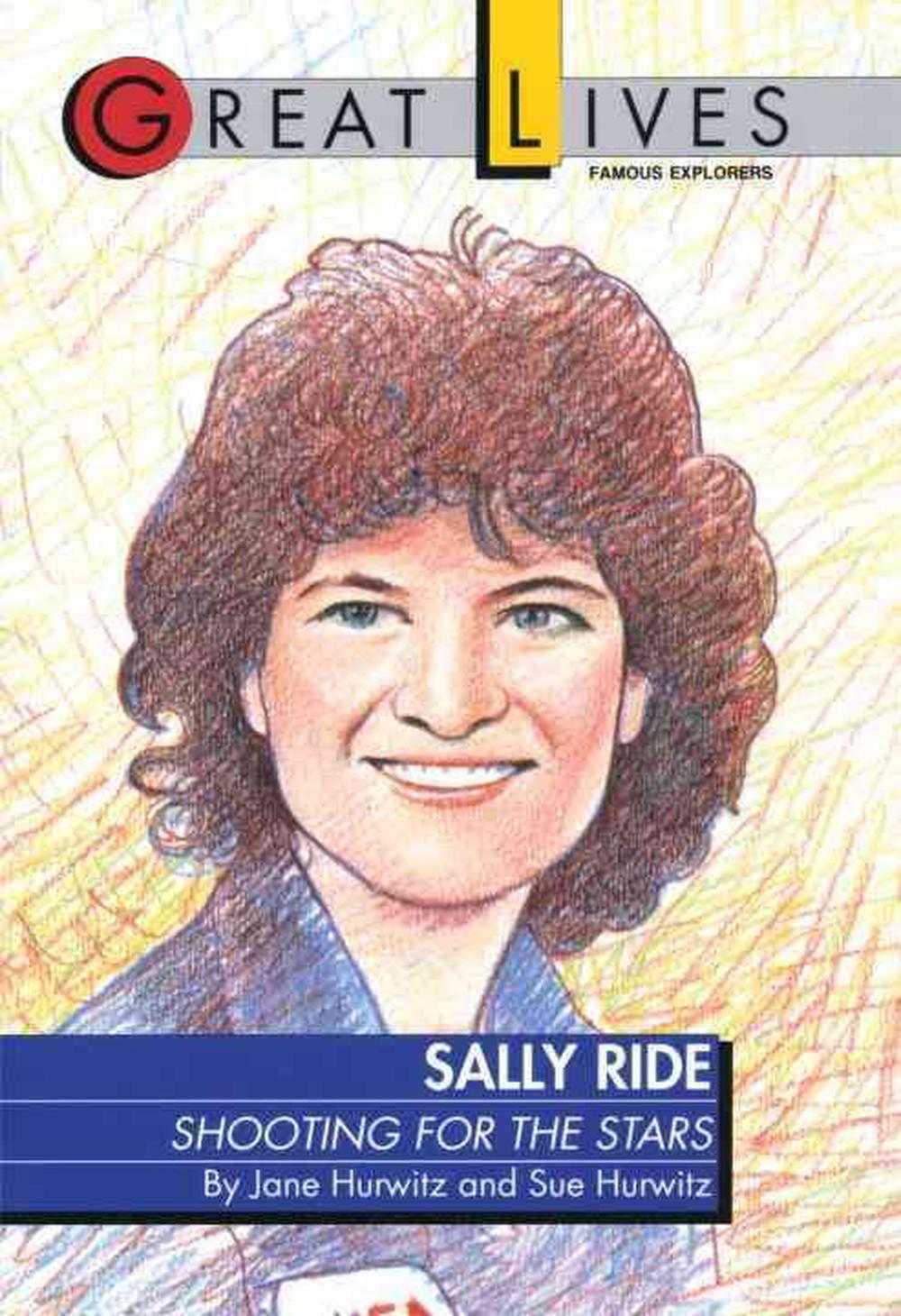
Sally Ride
by Sue Hurwitz
A biography of the California astrophysicist who became, with the second mission of the Challenger spacecraft in June 1983, the first American woman and the youngest American astronaut to orbit earth.
Paperback
English
Brand New
Publisher Description
Sally RideShooting for the StarsAstronaut Dr. Sally Ride took a deep breath and nervously waited as the powerful engines of the Space Shuttle Challenger roared to life. This was the most frightening, yet exciting moment of Sally's life! She was determined to prove that an American woman could perform in space as well as a man.Countdown to History!Sally Ride- Shooting for the Stars profiles the life of America's first woman astronaut to fly in space. Jain Sally's astronaut training as she learns to fly jets, practices sea rescue missions, and floats weightlessly in a special "zero gravity" aircraft. Witness her breathtaking view of Earth from 184 miles out in space while traveling aver 17,400 miles per hour! Then dare to share her dream of joining NASA's astronaut program.
Author Biography
Hurwitz earned her M.A. degree at Kansas University. She works as an economist.
Excerpt from Book
1 Lift-Off into Space KENNEDY SPACE CENTER: June 18, 1983. The astronaut van stopped in front of the launchpad and Dr. Sally Ride, mission specialist, and the four other members of the crew peeked out the window. A gentle Atlantic breeze blew across her face, stirring her curly brown hair, but Sally didn''t notice. Spotlights bounced off the gleaming white exterior of the space shuttle, Challenger. Sally''s attention was riveted to the awesome sight of the magnificent flying machine shrouded in Florida''s predawn darkness. This was the greatest moment in her life! The Challenger stood on its tail with its nose pointed toward the sky, the very same sky that Sally and the other four crew members would be thundering through in several hours. As Sally stepped down from the van and walked closer to the Challenger, the sputtering and gurgling of the shuttle''s engines echoed the bubbling of her own thoughts. She was finally getting her chance to fly in space! As Sally contemplated her first spaceflight, she wondered how she would react. As part of her extensive training for the shuttle flight, she had already spent countless hours in a simulator of the shuttle cockpit where she had experienced small doses of weightlessness. Still, she wondered how weightlessness, experienced while actually traveling in space, would really feel. How would her body react to the force of gravity pulling against her during lift-off? How would she react to the confinement of the small shuttle quarters during six days in space? As technicians hovered around the orbiter, carefully reexamining its many complicated components, Sally''s thoughts raced through the events in her life that led up to this moment. Long years studying math and science had trained her mind in problem solving. Intensive sports competition had trained her body. Now she had to prove she could put all that experience to good use. The scary truth was that Sally was about to be strapped into a four-million-pound aluminum and ceramic tile flying machine that stood over thirty stories high and was powered by a dangerous propellant. Although many people believed that space shuttle flights were nearly as safe as flying in commercial jets, Sally knew otherwise. In March 1981, when a test on the space shuttle Columbia was being conducted on one of the launchpads, an accident occurred. Unexpectedly, a compartment inside the rear of the shuttle was enveloped in gaseous nitrogen, depleting most of its oxygen. Even though the environment inside the chamber was clearly hazardous, an "all clear" signaled that it was safe for five waiting technicians to enter. When they did, disaster struck -- the workers collapsed from the poisonous fumes. The five were rushed to the hospital, but two died from inhaling the noxious gas. Sally knew that there were risks to spaceflight, but she was also thrilled about being propelled two hundred miles above Earth. Like the other astronauts with her, Sally believed that the dangers were worth the reward of doing something new -- breaking new ground, exploring the unknown. Sally would also be the first American woman to fly in space, though this was not her main focus. The pungent smell of jet fuel mingled with the salty air of coastal Florida as Sally and her companions walked to the elevator and stepped inside for the ride up to the shuttle''s cabin. The slow, tension-filled ascent up the scaffold beside the 195-foot shuttle was shared by Commander Robert Crippen, Pilot Frederick Hauck, Medical Doctor Norman Thagard (the first medical doctor assigned to a shuttle mission), and the other mission specialist, John Fabian. Though this was the seventh shuttle mission, there would be many new experiments, procedures, and tasks to carry out once the crew was in space. As they left the elevator the astronauts were greeted by several technicians, who scurried around checking and rechecking the astronauts'' flight suits -- especially their air supply -- and making sure they were staying on schedule. Sally''s anticipation mounted as the technicians helped her slip on her launch helmet, which would provide her with oxygen and radio communication with Mission Control during lift-off. After Sally and the other crew members climbed through the small hatch of the Challenger''s nose cone into the flight cabin, technicians prepared to strap the astronauts into their reclining seats. Sally''s eyes scanned across the flight deck of the shuttle orbiter. It looked much like that of a large commercial airline, except that three video screens occupied the center of the instrument console. These screens displayed vital information about the shuttle''s vast and complicated flight and navigation systems. Sally had practiced using the shuttle''s instruments many
Description for Library
A biography of the California astrophysicist who became, with the second mission of the Challenger spacecraft in June 1983, the first American woman and the youngest American astronaut to orbit earth.
Details

